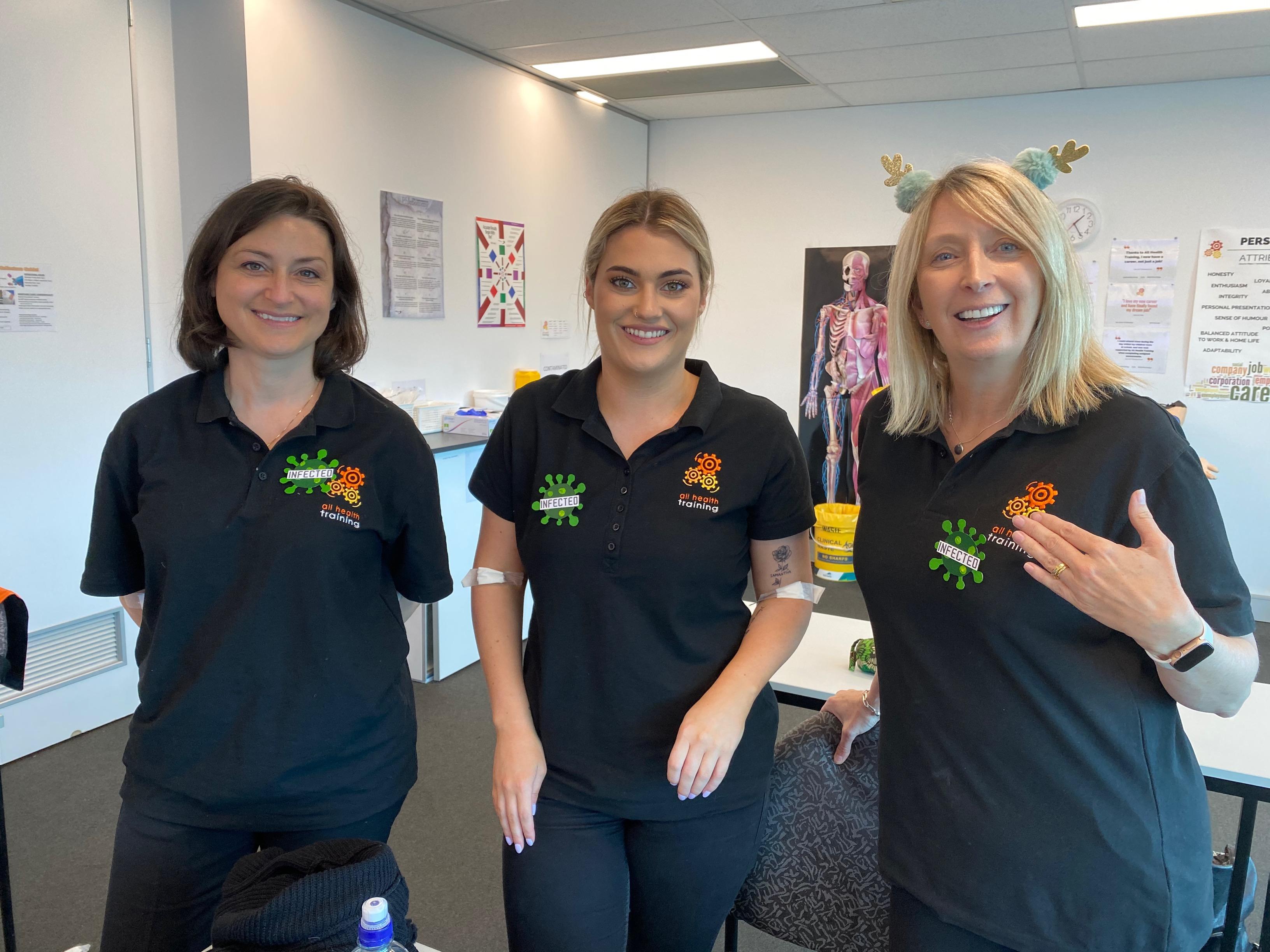Blog
How All Health Training Created a Robust Work-based Learning Program

Real-world training is vital to a successful learning experience.
To begin, you’ll need strong connections with some industry partners. Here’s how.
Work-based learning (WBL) creates better-skilled, more resilient students. These students go on to make lasting impressions within the industry. Industry partners begin seeking you out for work-based learning opportunities, training more industry-ready students.
A robust brand reputation and curriculum create long-lasting relationships with industry partners.
It comes full circle.
The “inclusion of work as a distinct component of an education program” promotes “smoother transitions into ongoing employment and the development of broad occupational skills”, according to the NCVER.
Providers have a unique opportunity to promote a well-rounded learning experience for their students. By building work-based learning practices into course curriculums, students can transition into the workforce with ease.
For Zoe Crowder, Operations Manager at All Health Training, encouraging a practical learning environment is an overarching goal. It’s what moulds students into strong, ‘job ready’ candidates.
Once you start the cycle, the momentum keeps things rolling.

Introduction to AHT
Founded in 2008, All Health Training is a niche education provider that offers nationally recognised health training. They specialise in individual support, ageing support and disability.
All Health Training prides themselves on student centricity. Students are held at the heart — every business decision loops and flows back to better student outcomes.
How WBL fits into AHT’s curriculum
This also speaks true to All Health Training’s work-based learning program. Practical training is integral to the health industry, and each student circumstance requires a unique learning experience.
Staff that have worked in the disability sector for the last five years but don’t have a qualification need a customised learning experience. It should align with their existing knowledge. While a student who is fresh out of school with no health experience requires a completely different approach.
When training existing workers, “we speak with the employer and unpack how to best support their staff to become fully qualified potentially in something that they’re already working in”, says Crowder.
“We take a level of appreciation for the skills and knowledge that they’ve already acquired on the ground, and wrap that up in a unit of competency.”
A custom program that integrates real-world learning practices is the key to ‘job-ready’ graduates. And it’s what sets good providers apart from great ones.
Build a respectable brand that partners can trust
Industry relationships can be tricky — partners can be fickle about who they do business with. Putting forward well-rounded, strong students is the solution to establishing and maintaining industry partnerships.
“For us, it’s all about really good communication with industry to make sure our students are job-ready.”
Students should be able to walk into a work-based learning environment and feel confident that they can handle the job with the experience they’ve already gained through classroom training. When they feel ready to take on practical placement, students leave lasting impressions on WBL employers.
When COVID restrictions began to ease, industry [partners] reached out to us to get our students on board. That just doesn’t happen if you take a transactional approach.
The same goes for ill-equipped students. Sending less-than-competent students can do irreparable damage to a brand. “It’s too competitive to be sending out students that aren’t representing your brand well,” Crowder says.
Building a solid, respectable reputation requires effort and a human touch. Take the time to create a brand that beams quality. Trust makes acquiring new partners much easier in the long run.
Ensure safety requirements are always met
Ensuring safety is fundamental to a work-based learning environment. When partnering with a new WBL employer, the first step should be to undertake a risk assessment before students are sent on-site.
Crowder suggests visiting the worksite and asking the following questions:
Students should also be encouraged to speak up if they encounter an unsafe situation when on placement.

Employer relationships and partnerships
Discovering industry partnerships
For providers looking to establish industry partnerships, Crowder recognises its challenges. “Making valuable connections with industry partners is no easy feat. You have to continue to knock on doors, make phone calls and regularly engage with them.”
Partnerships shouldn’t be transactional, and this is where many providers go wrong. Approaches like cold calling to source work-based learning environments can lack real authenticity.
“You’re much better off having a chat face-to-face. You can really unpack what they are looking for from your students and provide them with everything they need to make an informed decision.”
Alternatively, providers new to the WBL partnership game may opt to outsource to a work placement service provider. This option is great for education providers that are still establishing their own WBL processes.
If you’d prefer to outsource, you can list your business on JobActive’s provider directory, which is powered by JobSearch.gov.au. This service connects education providers with local employers that are interested in facilitating WBL programs.
We sit down with our industry partners to engage in formal conversations about our students. This helps us determine how they feel about our students and what we could do to improve our processes or training.
Regular feedback sessions with both students and industry keep providers in sync. By unpacking feedback commentary, providers can spark discussions that lead on to influence factors like course curriculum, uncover significant changes in industry practices and other measures to promote student centricity.
Moving through the loop, feedback check-ins also support employers in bettering their own practices and facilitating better mentoring programs. Closing the circle ensures a steady flow of value for everyone involved.
Maintaining industry partnerships
Each time a partner approaches a provider, they are initiating a huge investment in their business. Upskilling existing employees or mentoring students new to the industry takes time and money — a lot of thought goes into choosing the right education provider to partner with.
That’s why providers must distinguish themselves by promoting a mutually beneficial partnership that funnels value back to the employer. One opportunity is opening the doors to rhythmic feedback sessions.
Promoting a healthy feedback loop is paramount. Providers have a duty of care to both their students and industry partners, and regular feedback sessions drive a successful mentoring program.
“We collect mid-course and end-of-course feedback from every student. We then read through and summarise our findings for the trainers,” Crowder says.
Keep your finger on the pulse of a dynamic industry
Connect trainers with industry
Industry partnerships are what helps providers stay ahead of trends. By putting trainers in touch with your WBL partners, you create the opportunity to tap into new trends and changes. These findings can then be used to help build a new unit of competency.
COVID was the catalyst for many industry changes, and open discussions with industry helped to mould All Health Training’s current course curriculum. The flu vaccine was a major topic of conversation for health industries, with discussions around whether or not the flu vaccination should be mandatory in 2021.
“We sat down and spoke to the industry about what they would consider gold class standard and will build our student requirements to meet the changing industry standards,” Crowder said.
This keen insight prompted the skill to become mandatory across all All Health Training qualifications. It gave them and their students a competitive edge.
Providers open many doors when they embrace work-based learning practices.
Create the loop. Support the flow. And you’ll build a first-class work-based learning program that stands out.


